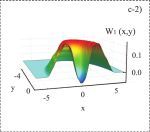EPJ D Highlight - Hi-fi single photons
- Details
- Published on 21 October 2012

A trade-off between photon source settings and detector specific requirements allows the generation of high-fidelity single photons.
Many quantum technologies—such as cryptography, quantum computing and quantum networks—hinge on the use of single photons. While she was at the Kastler Brossel Laboratory (affiliated with the Pierre and Marie Curie University, École Normale Supérieure and CNRS) in Paris, France, Virginia d’Auria and her colleagues identified the extent to which photon detector characteristics shape the preparation of a photon source designed to reliably generate single photons. In a paper just published in EPJD the French team determined the value of key source parameters that are necessary to generate high-fidelity single photons.The problem with photon detectors is that they can be noisy or have a limited ability to detect single photons. Some cannot identify the number of photons; they can only detect their presence. Given the influence of these factors, improving the fidelity of single-photon generation is very challenging. But it is also crucial for their subsequent use in quantum information protocols, including quantum communication and computing.
Single photons are typically generated using two laser beams that are correlated at the quantum level. This means that the detection of a single photon in the first beam heralds the generation of a single photon in the second one.
The authors first reviewed how to describe a detector from a mathematical point of view. They then simulated which photons would be obtained from different initial sources. This led the team to outline the conditions under which the heralding detector can deliver good resolution of the number of photons, as a means of improving the reliability in obtaining single photons. They corroborated their findings using two experimental detectors.
Effect of the heralding detector properties on the conditional generation of single-photon states. V. D'Auria, O. Morin, C. Fabre, J. Laurat, Eur. Phys. J. D (2012) 66: 249, DOI 10.1140/epjd/e2012-30351-6




